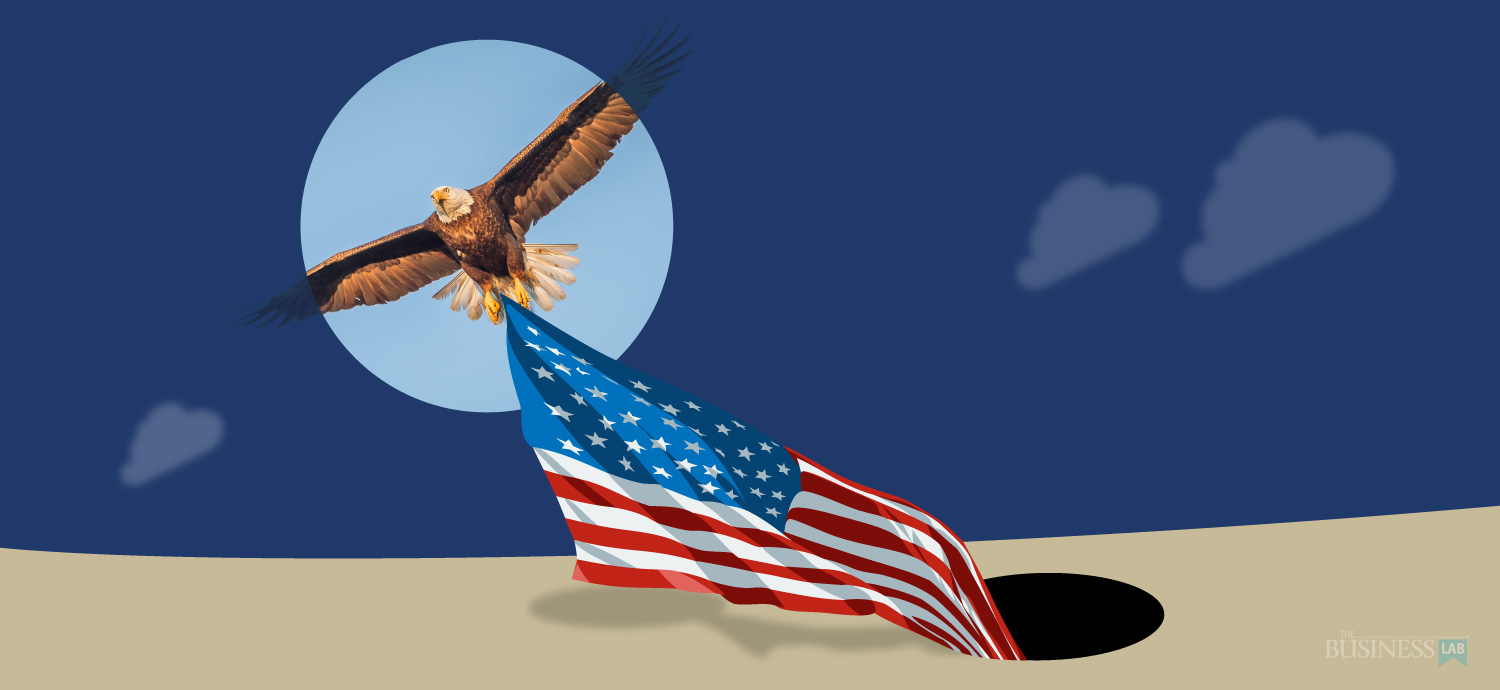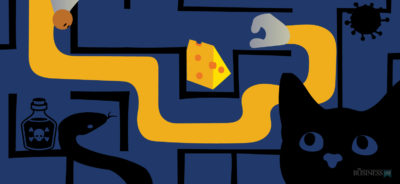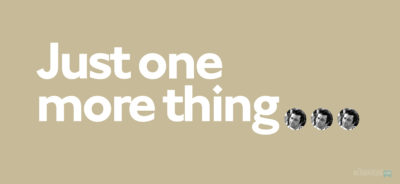Uncertainty
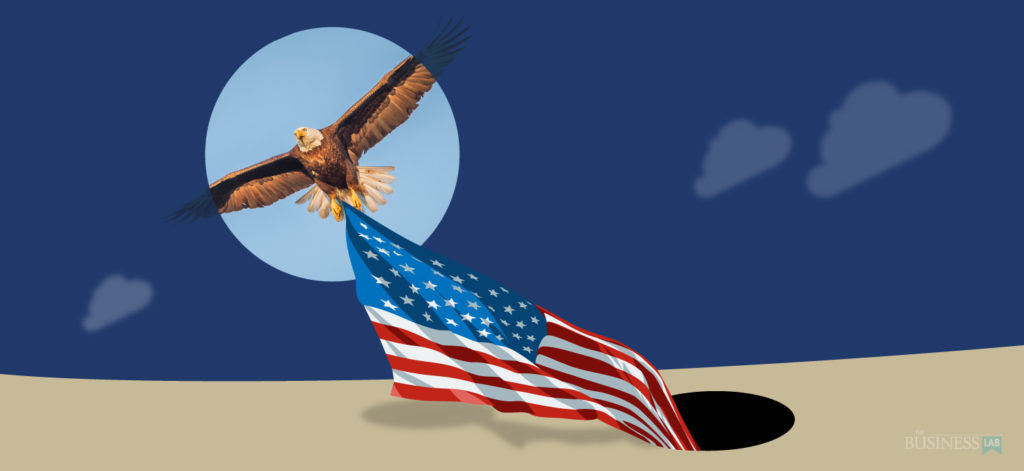
Uncertainty-unsmerentity
If you own or are the CEO of any business, uncertainty isn’t a thing; it’s a way of life. We deal with it every day. Uncertainty is just another way to say – we have a problem to solve.
Being American is what makes dealing with uncertainty a specialty of ours. Though some will argue, America is still the most innovative, risk-taking country in the world. Yeah, our status is being threatened like never before, but we are far from out of the race.
It will be just this type of innovation and risk-taking that will “heal” our country and positively influence the world.
President Trump had the right idea, “Make America Great Again,” but his approach was somewhat polarizing.
America could certainly use another Mission to the Moon to galvanize and bring us all together again. Maybe President Biden has a plan.
But, we business owners & leaders cannot wait for someone else to take the lead and control our future. Maybe it’s a little like, “we have met the enemy, and he is us,” but regardless, it’s “us” who will figure it out.
It’s not about trying to predict something that cannot be predicted – the future. It’s about which way to lean and to react faster than your competitor, being in a position to respond when the market tells us something.
Like many countries, America hasn’t replenished its population with youth as fast as improved life expectancy has aged her. Rapid replenishment in manufacturing is a sort of “holy grail” and one worth pursuing. But, it’s not all that transferable to supplying enough young to offset the old and dependent. Declining birth rates come with affluence. And America is, for the most part, affluent – certainly an advanced economy.
The slow and declining birth rate is bad for the economy – and not favorable for the youth. Mauro F. Guillén, in his book, 2030 – How Today’s Biggest Trends Will Collide and Reshape The Future of Everything, puts it into perspective.
A few more numbers for you:
By 2030 here’s what will be happening:
- US Demographics are changing: Hispanic Americans aged 15 to 34 will be the majority. And Hispanic Americans are more likely than any other group (white or otherwise) to be self-employed or own a business.
- There will be more grandparents than grandchildren.
- For every baby born in America, 4.4 are born in China, 6.5 in India, and 10.2 in Africa.
- Women will own more than half of the world’s wealth. And women are different than men when it comes to making decisions.
- While America and Western Europe age on, the centers of innovation, invention, and disruption will move to emerging countries.
- Middle-class Asia will be larger than middle-class America and Europe combined.
- The Asian markets (even excluding Japan) will be so large that the center of global consumption will shift eastward. Most new products and services will be reflecting the preferences of Asian buyers.
- African agriculture is predicted to become a trillion-dollar sector by 2030. They are about to experience what happened to us in centuries past – a dual agricultural and industrial revolution.
- Kenya is one of the world leaders in mobile payments, and Nairobi – it’s been dubbed the “Silicon Savannah.”
- YEP: By 2030, we will have more industrial robots than manufacturing workers, more computers than human brains, more sensors than human eyes, and more currencies than countries.
By the way, 2030 is less than ten years away – it goes by quickly.
Assuming the above is reasonably accurate…
Boom or Doom? That probably depends on how good a company is at following and taking advantage of market trends. It also depends on mindset – taking actions competitors will not take or taking a wait-and-see stance, “let’s see how this whole post-COVID thing turns out.”
Either way, the future must be dealt with.
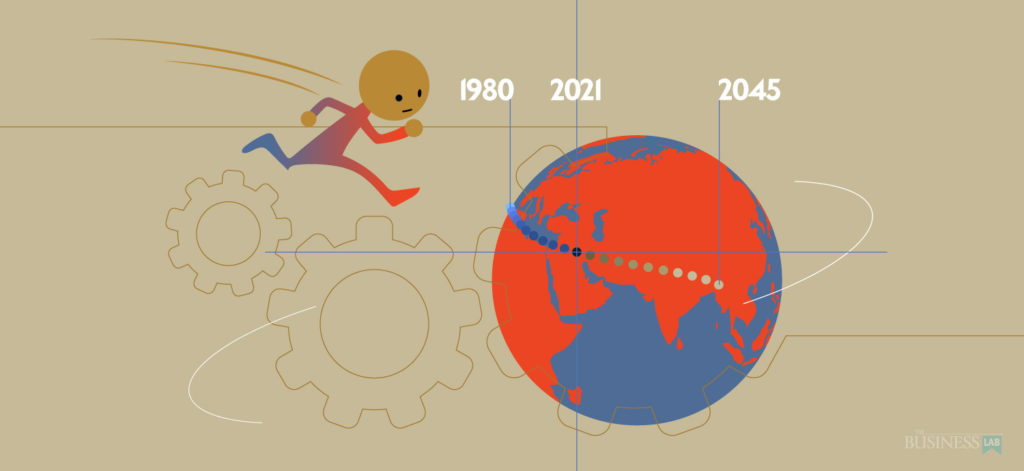
Market demand is shaped by customers’ tastes, habits, and preferences – whether that’s the 2030 view or the 2021-22 view. One of the biggest things taken from us during COVID is intuition. Of course, not entirely, but our intuitive sense of what the market is likely to do in the near future is diminished. So, yes, while Americans are ready-built for uncertainty, the level of uncertainty is much higher than anything seen in a long time, maybe ever.
What do things look like for a company’s customers and their customers – tomorrow or in 2030?
When global consumption moves eastward, what does “Asian preference” mean for an organization and its products/services?
When women own more than half of the world’s wealth, what, if any, adjustments will be necessary – products, offerings, services, capacities, capabilities – what can reasonably be expected?
On the consumer purchasing side, most companies understand that women make the majority of the household decisions. But will female CEOs make decisions differently than their male counterparts? If so, how? What is most likely to happen, and what does that mean for the organization?
As America and other countries age (including China, which is aging faster than the US), how will their habits affect consumers and businesses? If you manufacture plastics for the healthcare industry, you will probably thrive. If you manufacture for or are in the housing industry, an aging population will create different demands than a younger population. This affects the demand for single versus multi-family properties, for owning versus renting, and for residential improvements that allow older adults to age in place. Older people do not spend in the same way younger people do.
When African agriculture becomes a trillion-dollar industry, can or should an organization be part of that? If so, how?
What do things like near-shoring mean? Will it help reduce lead times and inventory? Will it minimize the risk of future COVID-like disruption?
If a significant percentage of the workforce (the US or otherwise) never sets foot inside a high-rise office building again, what does that mean for the business?
Many intelligent people predict inflation and that the Fed’s have worn out their qualitative easing bullets to combat it. Unless we can figure out how to turn all the current and rapidly increasing debt into equity, we are caught in a concerning debt trap.
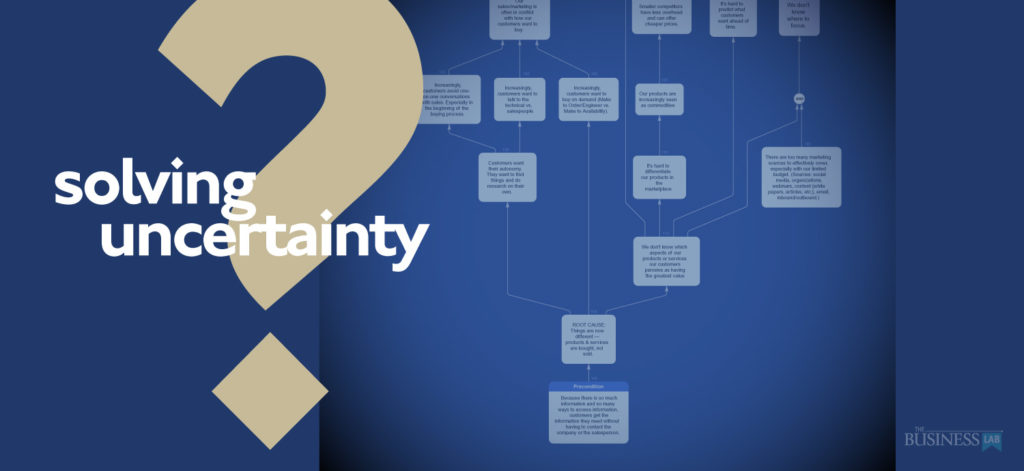
What does any of it mean for an organization, for the organization’s customers, or for the customers of the organization’s customers?
When assessing uncertainty and the future, tracing the company’s product or service to the final consumer/customer can bring valuable insights. Thinking up and down the supply chain as far as possible and stopping to think how things are most likely to change can point in the (new) right direction. Of course, all assumptions need to be validated as much as possible to avoid wishful thinking, group-think, or rabbit holes.
It all boils down to understanding cause and effect and the company’s position with that dynamic. This, along with understating optionality, will make things much easier for companies in the short and long term. Most companies already understand their business ecosystem – suppliers, customers, their customers, their customers, etc. No one has to be a true prophet to figure out the general direction of what’s happening. Using cause and effect will give you a pretty good idea of how the system will or likely will respond. This, in turn, will present a good idea of what to do – which way to lean. Validating the underlying assumptions and then adding indicators or triggers when things are going out of bounds will make the picture clearer on an ongoing basis.
Example: If a company manufactures steel products for car manufacturers and it knows that 50% of the vehicles are made up of plastics – and that plastics only contribute 10% to the weight – and that a 10% reduction in weight can lead to an ~8% improvement of fuel emission, then, this company can factor that into future product and market segments. What can be done to insulate the company from ‘being caught off guard?’
Understanding optionality can be as simple as segmenting markets so that the company has a good presence in several markets and that there is little chance of all those markets going down at the same time.
Adding buffers to protect the goal and signals warning if the market is taking a different direction than anticipated are critical. Re-planning may be necessary. Trial & error and failures will happen, but buffers and triggers can limit the damage, and the company will benefit significantly via more clarity. These more minor mistakes are likely to prevent or mitigate much larger ones.
Establish a very high/ideal filter, then run things through that.
To get clarity, research is needed. To find the best sources, ask customers what research they pay attention to – this is an excellent place to start.
In systems thinking or the thinking process, tools called Current and Future Reality Trees are used to map out cause-effect relationships.
Tools like this have been responsible for many highly profitable breakthroughs. Its power lies not just in finding the direction but in understanding why. From here, a Transition Tree can be built to get from A to B. It involves all key people and brings insights from their perspectives – this tends to expose any negative consequences that would have been left out. It also gives the team the tools on how to deal with those potential negatives and turn them into positives – or the need to re-think the solution.
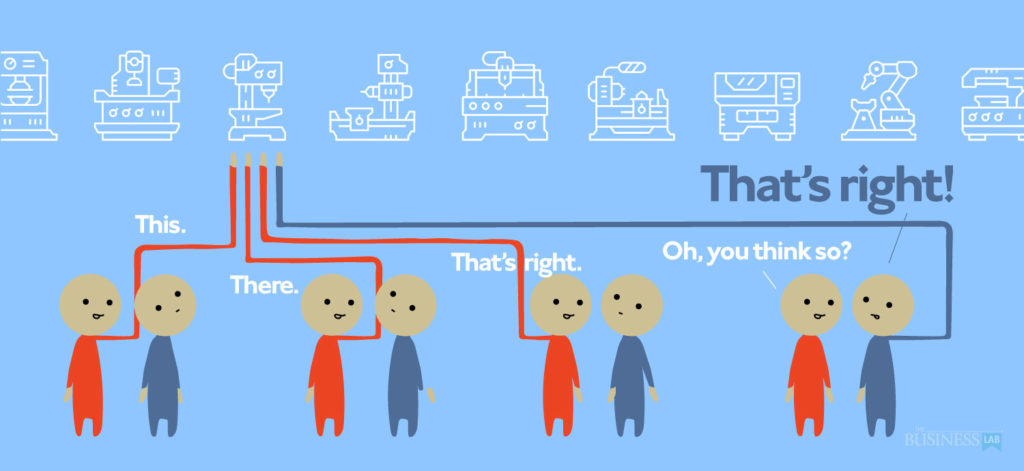
To take it a step further, companies can create a sales pitch – not for their company, but a pitch of their customer’s company. It’s a pitch that pitches their customer’s products and services to their customers. This will bring a new and essential perspective to what the customer needs and how to help them get there.
Included in the pitch:
- Clear, concise, compelling overview/idea that states what’s facing this customer – the problem, what’s changing, the forces behind the current situation. What is stopping them from increasing sales or profits? It might start something like this, “What happens when an industry unintentionally forces its customers to make bad decisions that hurt their profitability?” Or, “What happens when a company breaks its promises to its customers?”
- Spend most of your time on the problem. Understand their problem to the degree that they agree with you that, yes, this is the problem. In Chris Voss’s excellent book, Never Split The Difference, he refers to this as the “that’s right” phrase, which means you’ve broken through and you now have their full attention.
- What’s changing in their world right now?
- Why is the problem so hard to solve?
- The solution, value prop, and how it will remove the limitations and help the company get more of what they want.
In our next article, we’ll present a Current Reality Tree.
You can also call us at 281-610-8631 (Kathy) if you’d like more information.
Continued success!

